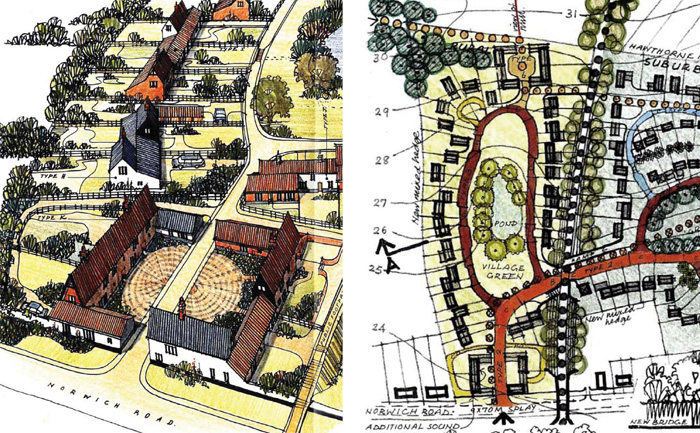Before I signed off at the end of the year I was talking about contemporary ‘farmsteads’ – one of my four rural archetypes. I had it in mind to talk about how a dense grouping of dwellings laid out around a shared courtyard – perhaps like Crown Paddock described previously – could be used to raise the average density of the edge of a new settlement, and introduce some variety to it at the same time. While reading up for a future post about the Norfolk Residential Design Guide I discovered that someone’s beaten me to it…
This image in the Guide shows a new-build ‘farmstead’ used as the gateway to a residential development; the commentary talks more about variety in the streetscape rather than density, but it makes the point quite well.
Using the courtyard as a main throroughfare like this would in my view be a bit odd, destroying the privacy and intimacy that’s so attractive at Crown Paddock for example, and stylistically I find this image quite problematic. The Guide was only published in 1998, and I suspect the rather literal vernacular pastiche would have looked quite dated even then – despite the rather lovely illustrations by David Summers. The illustrations and supporting photos suggest a stronger preference for vernacular detailing than is present in the text, which does in places make some quite subtle observations about streetscape, density and massing. Given my previous comments about roofs across fields, you’ll not be surprised that this really struck me:
Rural residential areas should exude a leafy rural quality…there should not be a strong division between the edge of the development and the surrounding countryside
I’ll come back to the Norfolk Residential Design Guide later, comparing it to the Cork Rural Design Guide. But next we’ll stick with the ‘farmstead’, and something definitely more contemporary…
More about design guides (Norfolk and Cork) here.

